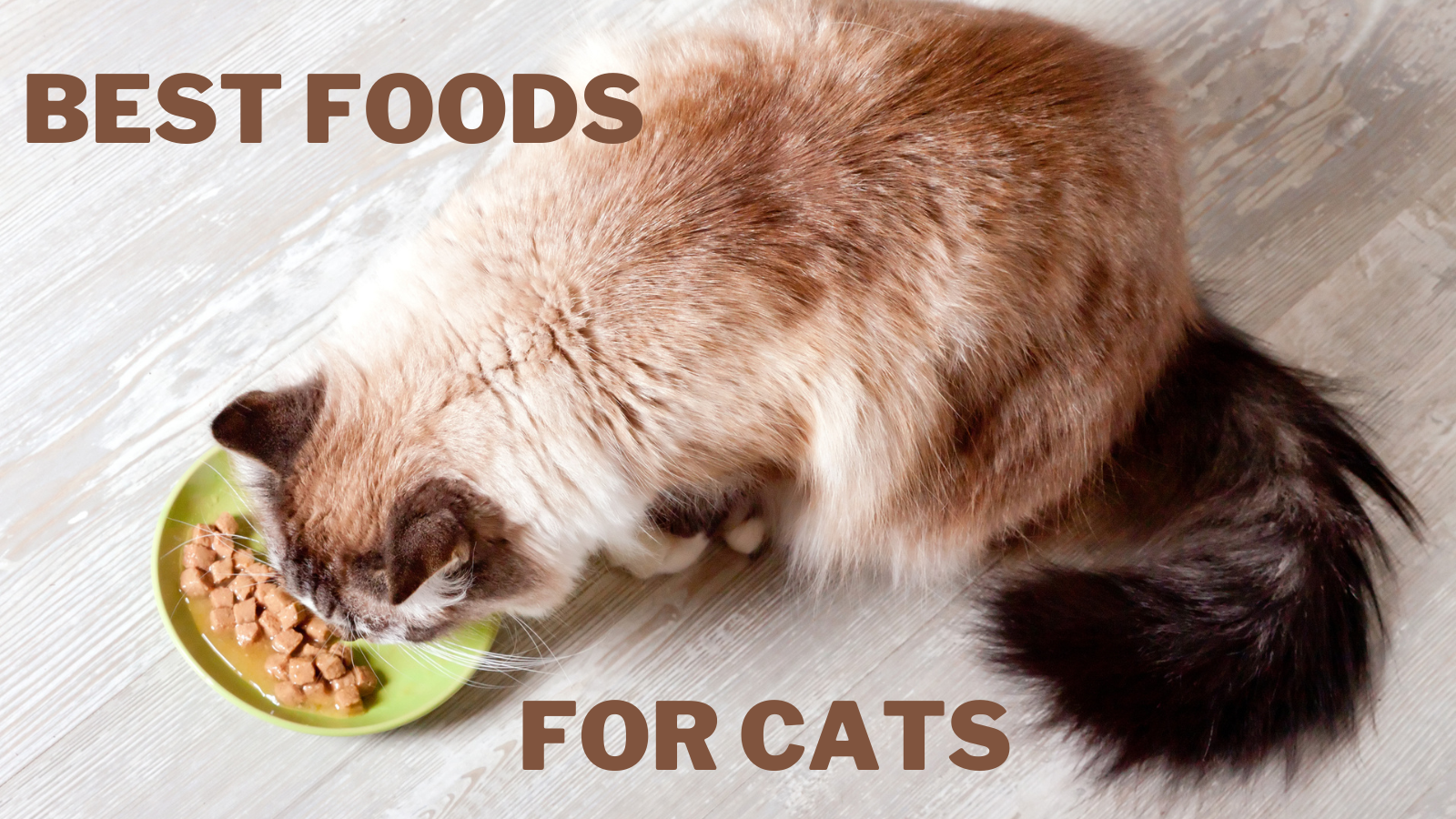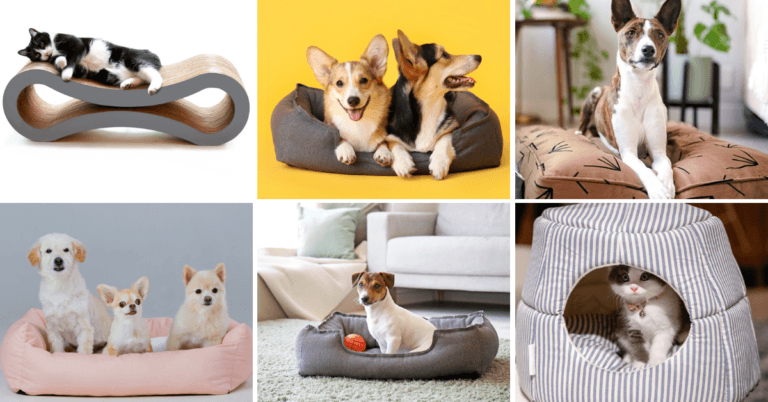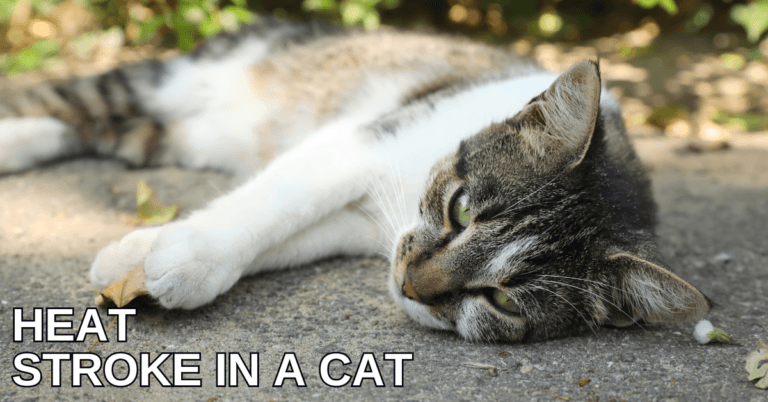Best Foods For Cats
Best Foods For Cats
As cat owners, we want to provide our furry feline friends with the best nutrition possible. With so many cat food options available, it can be overwhelming to choose the right one. But don't worry; we've got you covered!
This blog post will discuss some of the best cat foods, including wet and dry options. We'll also highlight the nutritional benefits of each type of food, so you can make an informed decision about what to feed your cat.
Whether a new cat owner or a seasoned pro, this post will give you valuable insights into the best foods to keep your cat healthy and happy. So, let's get started!
Types Of Cat Food
Here are some details about the different types of cat food:
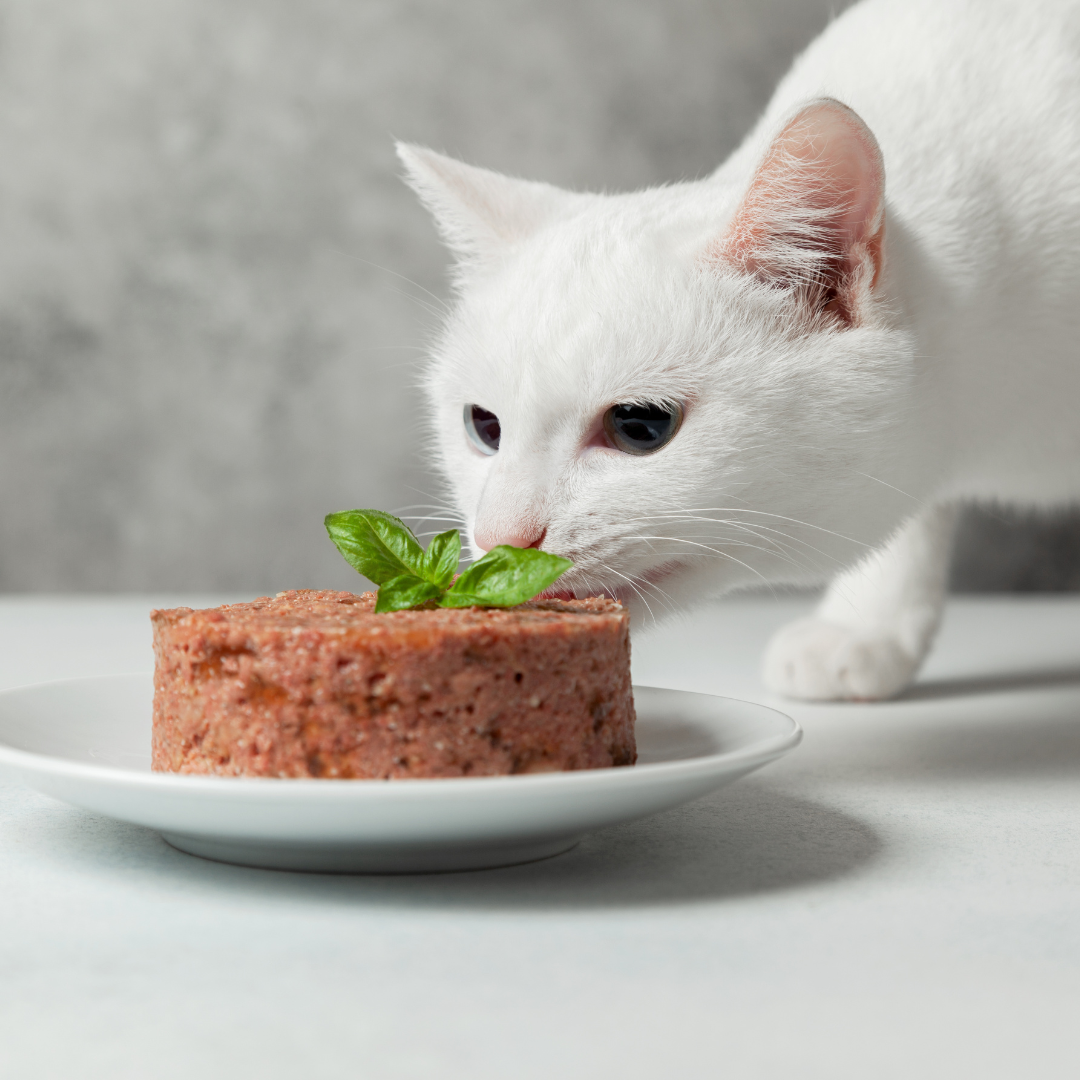
1. Wet Food
Wet cat food is a type of cat food available in various flavours and textures. It is typically sold in cans or pouches and contains a high moisture content, usually around 75%. The high moisture content is one of the key benefits of wet cat food, as it helps to keep your cat hydrated and supports its urinary tract health.
Wet cat food comprises several different ingredients, with the primary ingredient usually being real meat or fish. This meat is an excellent source of high-quality protein for your cat's health.
Wet cat food may contain other ingredients like vegetables, fruits, and grains. It's important to choose a wet food that is appropriate for your cat's nutritional needs.
Wet cat food can be an excellent choice for cats with difficulty drinking enough water or needing additional hydration for other health reasons.
It offers a more fascinating and diverse texture and flavour profile, making it a fantastic option for cats who prefer wet food to dry food. Additionally, moist cat food may be easier to digest for some cats, which can benefit cats with digestive issues.
When choosing wet cat food, looking for high-quality brands that use real meat or fish as the primary ingredient is important. Avoid brands that use fillers or by-products, as these ingredients don't provide the same nutritional benefits.
Choosing a wet food appropriate for your cat's life stage and health needs is also important. Consult your veterinarian for any questions or concerns about your cat's diet.
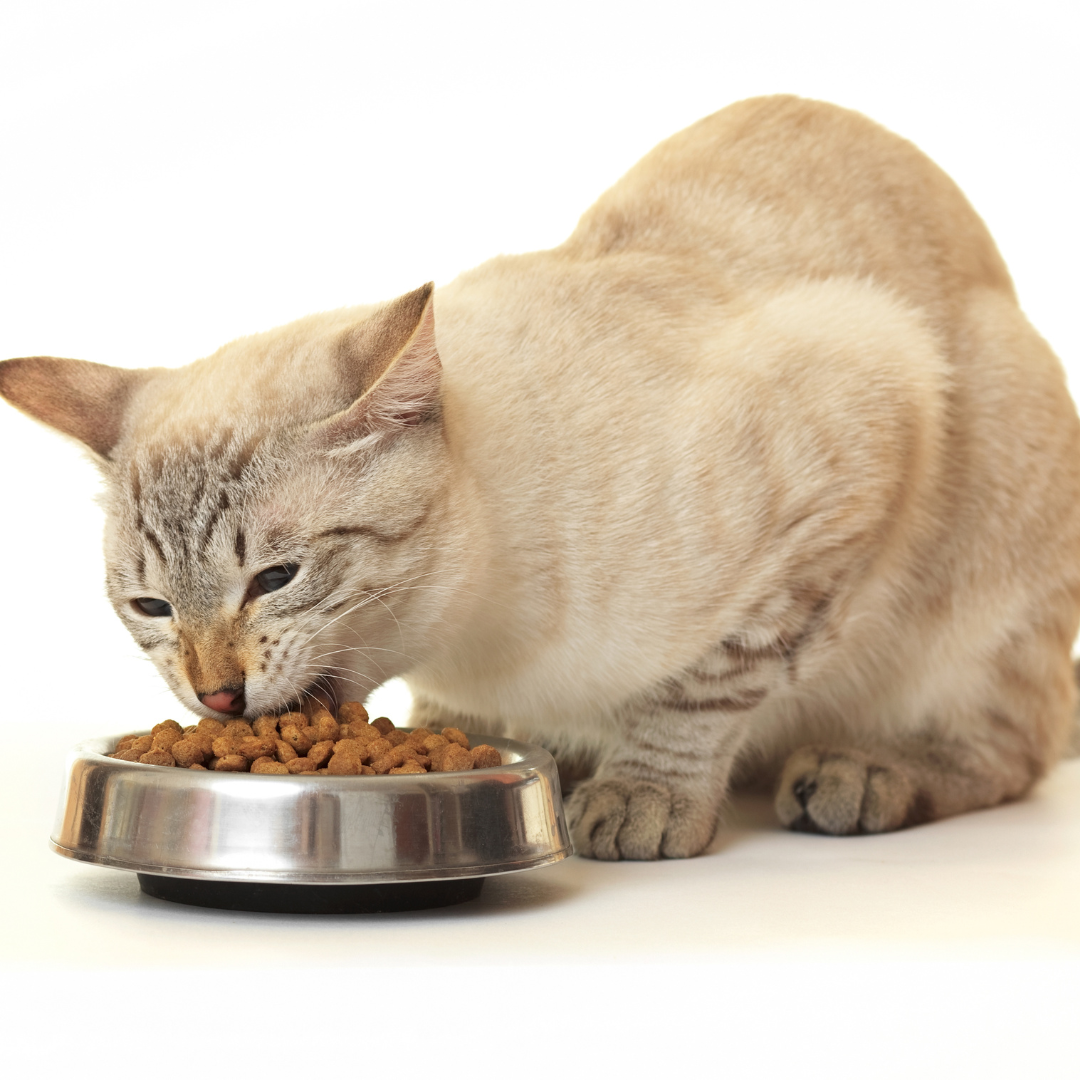
2. Dry Food
Dry cat food, also known as kibble, is a type of cat food that is sold in bags or containers. Unlike wet cat food, it has a low moisture content, usually around 10%. It's important to note that cats have a low thirst drive and often don't drink enough water to stay properly hydrated, so it's essential to make sure your cat has access to plenty of fresh water when eating dry cat food.
Dry cat food comprises several different ingredients, with the primary ingredient typically being meat or fish meal. Meat meal is a concentrated protein source made by removing the water and fat from meat. Dry cat food may contain grains, vegetables, and fruits.
One of the benefits of dry cat food is that it is convenient and easy to store. It can be left out for your cat to eat throughout the day and doesn't require refrigeration. Additionally, dry cat food is often less expensive than wet cat food.
When choosing dry cat food, looking for high-quality brands that use real meat or fish as the primary ingredient is important. Avoid brands that use fillers or by-products, as these ingredients don't provide the same nutritional benefits.
Choosing a dry food appropriate for your cat's life stage and health needs is also important. Some cats may have trouble chewing or digesting dry food, so monitoring your cat's behaviour and health is important when transitioning to dry food. Consult your veterinarian for any questions or concerns about your cat's diet.
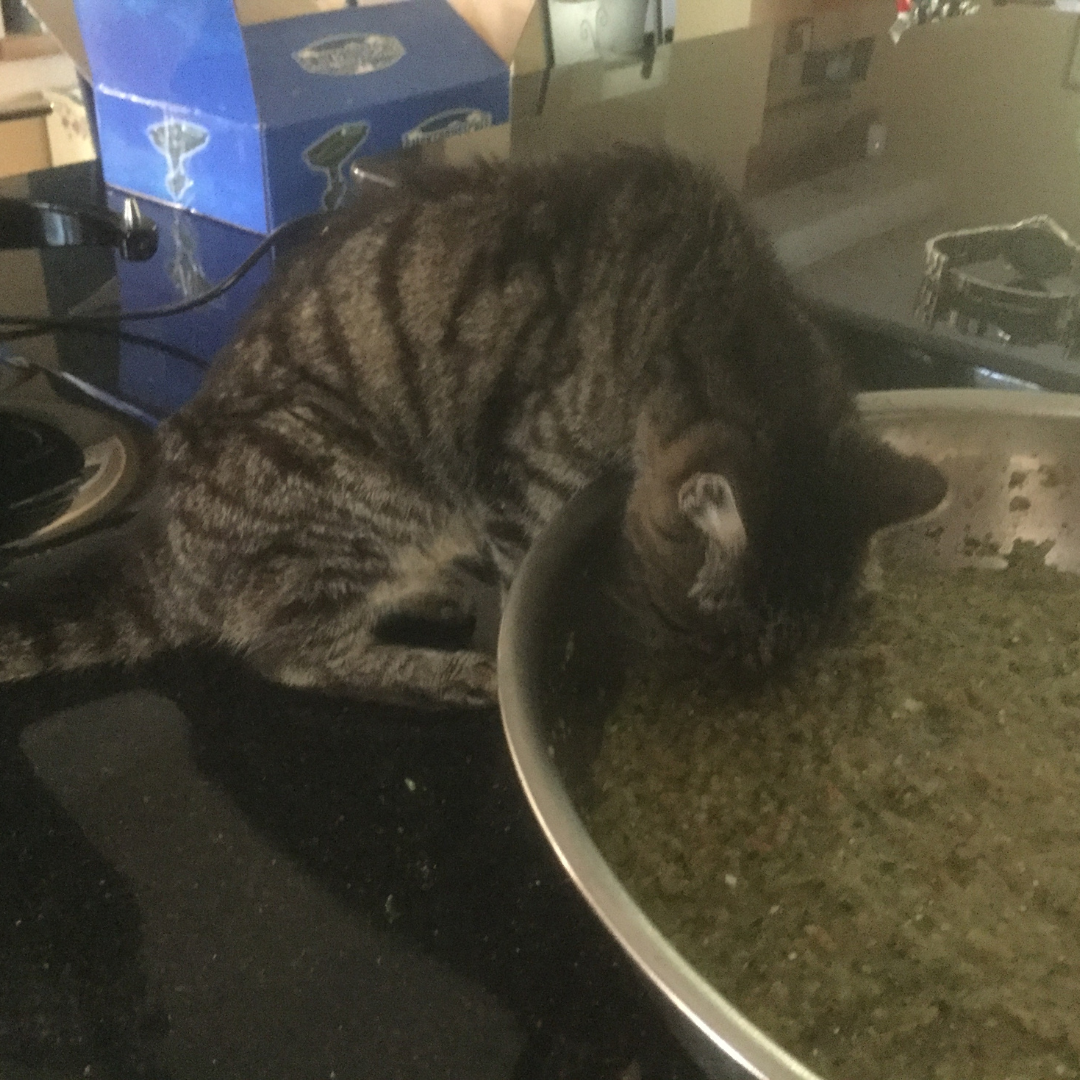
3. Raw Food
Raw cat food is a type of cat food that is made from uncooked and unprocessed ingredients. It is typically made from raw meat, bones, and organs and may include fruits, vegetables, and other supplements.
Proponents of raw cat food argue that it provides a more natural and biologically appropriate diet for cats, as it closely resembles the diet of their wild ancestors.
One of the key benefits of raw cat food is that it provides a high-quality source of protein, which is essential for your cat's overall health. Raw meat is also a good source of essential fatty acids, vitamins, and minerals.
Additionally, proponents of raw cat food argue that it can help to improve your cat's coat and skin health, reduce the risk of dental problems, and improve digestion.
However, feeding your cat, a raw diet is also associated with risks. Raw meat can contain harmful bacteria like Salmonella and E. coli, which can cause illness in both cats and humans. Additionally, raw diets may not provide a complete and balanced source of nutrition, which can lead to deficiencies or imbalances over time.
If you are considering feeding your cat a raw diet, it's important to research and consults your veterinarian. Ensure your raw food is made from high-quality ingredients and tested for harmful bacteria.
Additionally, monitoring your cat's behaviour and health closely is important when transitioning to a raw diet. Consult your veterinarian for any concerns or questions about your cat's diet.
4. Semi-Moist Food
Semi-moist cat food is a type of cat food that's made using a process called extrusion. This involves cooking the ingredients at high temperatures and pressures to create a soft, chewy texture. Semi-moist cat food usually contains around 25-35% moisture, which is higher than dry cat food but lower than wet cat food.
One of the advantages of semi-moist cat food is that it's very convenient. It comes in small packets or pouches that can be easily opened and resealed, so you don't need to worry about storing large cans of wet cat food or bags of dry cat food. Semi-moist cat food is also very palatable, which makes it a good option for picky eaters.
However, there are some drawbacks to semi-moist cat food. One of the main concerns is that it can be high in sugar and preservatives, which can harm cats in large amounts.
Some semi-moist cat food also contains artificial colours and flavours, which may not be healthy for cats. Additionally, semi-moist cat food tends to be more expensive than dry cat food and may not provide the same dental benefits.
As with any cat food, it's important to choose a high-quality brand and read the label carefully to ensure that it meets your cat's nutritional needs. You should also talk to your veterinarian to determine whether semi-moist cat food is the right choice for your cat.
5. Age-Specific Cat Food
Here are some details about age-specific cat food and the nutritional requirements for each life stage:

Kitten Food
Kitten food is formulated to meet the specific nutritional needs of growing kittens. Kittens require a diet high in protein and fat to support their rapid growth and development.
Kitten food should contain at least 30% protein and 20% fat, higher than the amounts typically found in adult cat food. High-quality protein sources, such as meat, fish, and poultry, should be the primary ingredients in kitten food.
In addition to protein and fat, kitten food should also be rich in vitamins and minerals. Calcium, phosphorus, and vitamin D are important for healthy bone and teeth development. Kitten food should also contain other essential vitamins and minerals, such as vitamins A, E, and B, iron, zinc, and taurine.
Kitten food is available in wet and dry varieties; some brands offer a combination. Wet kitten food can be a good choice for kittens that have trouble chewing or digesting dry food. It can also help ensure that kittens get enough moisture in their diet, which is important for their overall health.
On the other hand, dry kitten food is generally more convenient and easier to store. It may also help promote dental health by reducing plaque and tartar buildup.
It's important to choose a high-quality kitten food that's specifically formulated for kittens. Avoid feeding your kitten adult cat food, as it may not provide the right balance of nutrients that your kitten needs to grow and develop properly.
You should also consult with your veterinarian to determine how much and how often to feed your kitten and address any concerns about your kitten's diet or health.
Adult Cat Food
Adult cat food is formulated to meet the nutritional needs of cats between 1 and 7 years of age. Adult cats require a balanced diet lower in calories than kitten food to help maintain a healthy weight.
Adult cat food should contain around 25-35% protein, essential for muscle maintenance and repair. High-quality protein sources, such as meat, fish, and poultry, should be the primary ingredients in adult cat food.
In addition to protein, adult cat food should also be rich in essential vitamins and minerals. Calcium and phosphorus are important for healthy bones and teeth, while vitamins A, E, and B help support overall health and well-being. Taurine, an amino acid found only in animal-based protein sources, is essential for maintaining heart and eye health in cats.
Adult cat food is available in wet and dry varieties; some brands offer a combination. Wet adult cat food can help ensure that cats get enough moisture, which is important for their overall health.
It can also be a good choice for cats with trouble chewing or digesting dry food. On the other hand, dry adult cat food is generally more convenient and easier to store. It may also help promote dental health by reducing plaque and tartar buildup.
Choosing high-quality adult cat food specifically formulated for adult cats is important. Avoid feeding your cat kitten or senior cat food, as these formulas may not provide the right balance of nutrients that adult cats need.
You should also consult your veterinarian to determine how much and how often to feed your cat and address any concerns about your cat's diet or health.
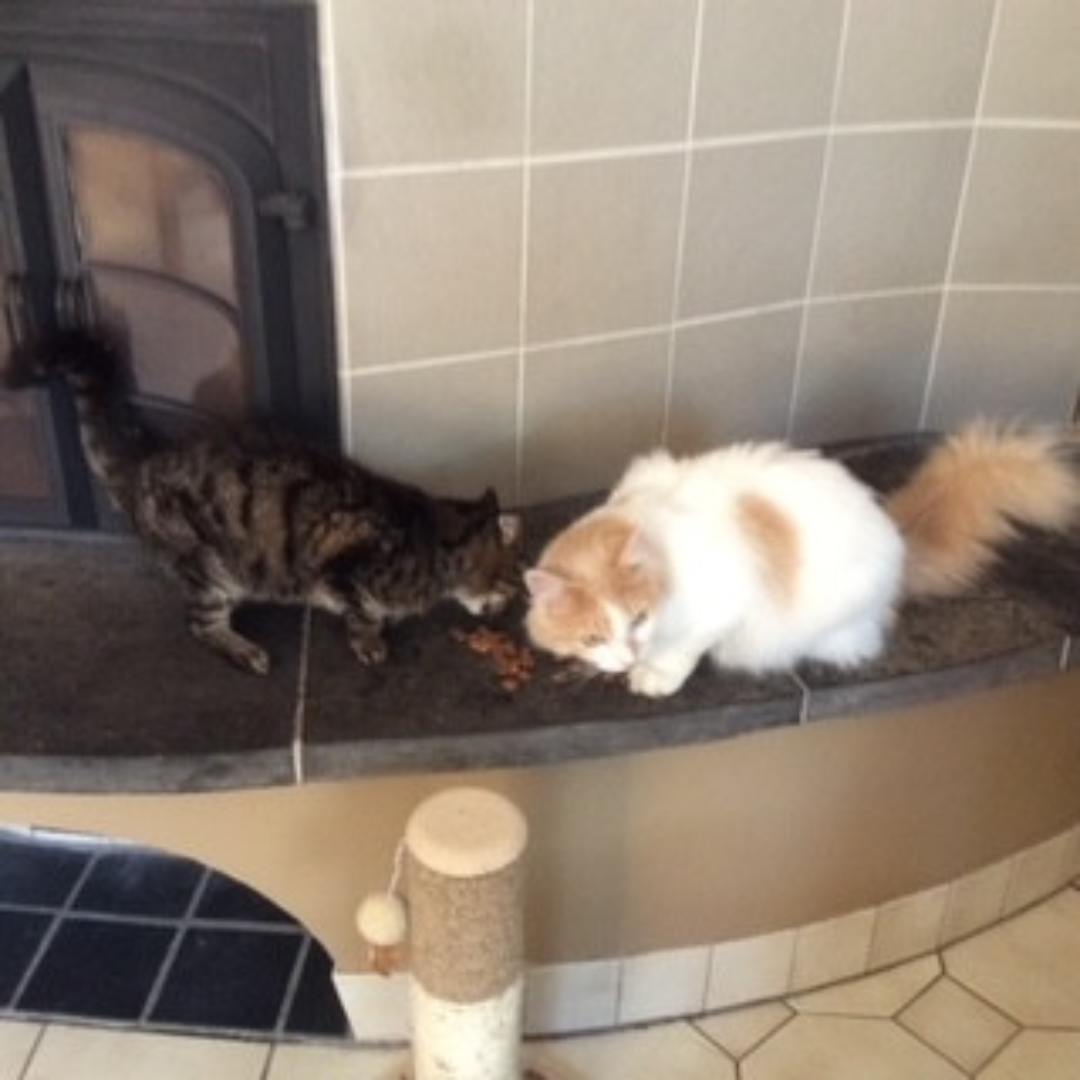
Senior Cat Food
Senior cat food is formulated to meet the nutritional needs of cats over 7 years of age. As cats age, their metabolism slows down, and they may become less active.
This means they require fewer calories than younger cats but still need a diet rich in protein and other essential nutrients to support their overall health.
Senior cat food should contain 25-30% protein, which is important for maintaining muscle mass and strength. High-quality protein sources, such as meat, fish, and poultry, should be the primary ingredients in senior cat food. Senior cat food may also be lower in fat and calories than adult cat food to help prevent obesity, a common health problem in senior cats.
In addition to protein, senior cat food should be easy to digest and contain joint-supporting nutrients like glucosamine and chondroitin to help support mobility.
Some senior cat foods also contain antioxidants, which can help support immune function and reduce the risk of age-related diseases.
Senior cat food is available in wet and dry varieties; some brands offer a combination. Wet senior cat food can help ensure that cats get enough moisture, which is important for their overall health.
It can also be a good choice for cats with trouble chewing or digesting dry food. On the other hand, dry senior cat food is generally more convenient and easier to store.
It's important to choose high-quality senior cat food specifically formulated for seniors. Avoid feeding your senior cat kitten or adult cat food, as these formulas may not provide the right balance of nutrients that senior cats need.
You should also consult with your veterinarian to determine how much and how often to feed your cat and address any concerns about your cat's diet or health.
Best Cat Food Brands
Many different cat food brands are on the market, and it can be difficult to determine which ones are the best for your cat. Here are some of the top cat food brands that are known for their high-quality ingredients and nutrition:
1. Hill's Science Diet
This brand offers a wide range of cat food formulas, including dry and wet food options for cats of all ages and health needs. Hill's Science Diet uses high-quality ingredients and has a team of veterinary nutritionists who help to develop their recipes.
2. Royal Canin
Royal Canin is a popular brand that offers a wide range of cat food formulas, including breed-specific options and food for cats with specific health conditions. They use high-quality ingredients and have a team of veterinary nutritionists who help to develop their recipes.
3. Purina Pro Plan
Purina Pro Plan offers a range of cat food formulas, including options for cats with sensitive stomachs, weight management needs, and more. They use high-quality ingredients and have a team of veterinary nutritionists who help to develop their recipes.
4. Orijen
Orijen is a premium cat food brand with high-quality ingredients, including whole meats, fruits, and vegetables. They offer a range of cat food formulas, including options for kittens and senior cats.
5. Blue Buffalo
Blue Buffalo is a popular cat food brand that uses high-quality, natural ingredients, including real meat, fruits, and vegetables. They offer various cat food formulas, including grain-free options and food for cats with specific health needs.
Remember, the best cat food brand for your cat will depend on their needs and preferences. It's important to read labels and ingredient lists carefully and consult your veterinarian if you have any concerns about your cat's diet.
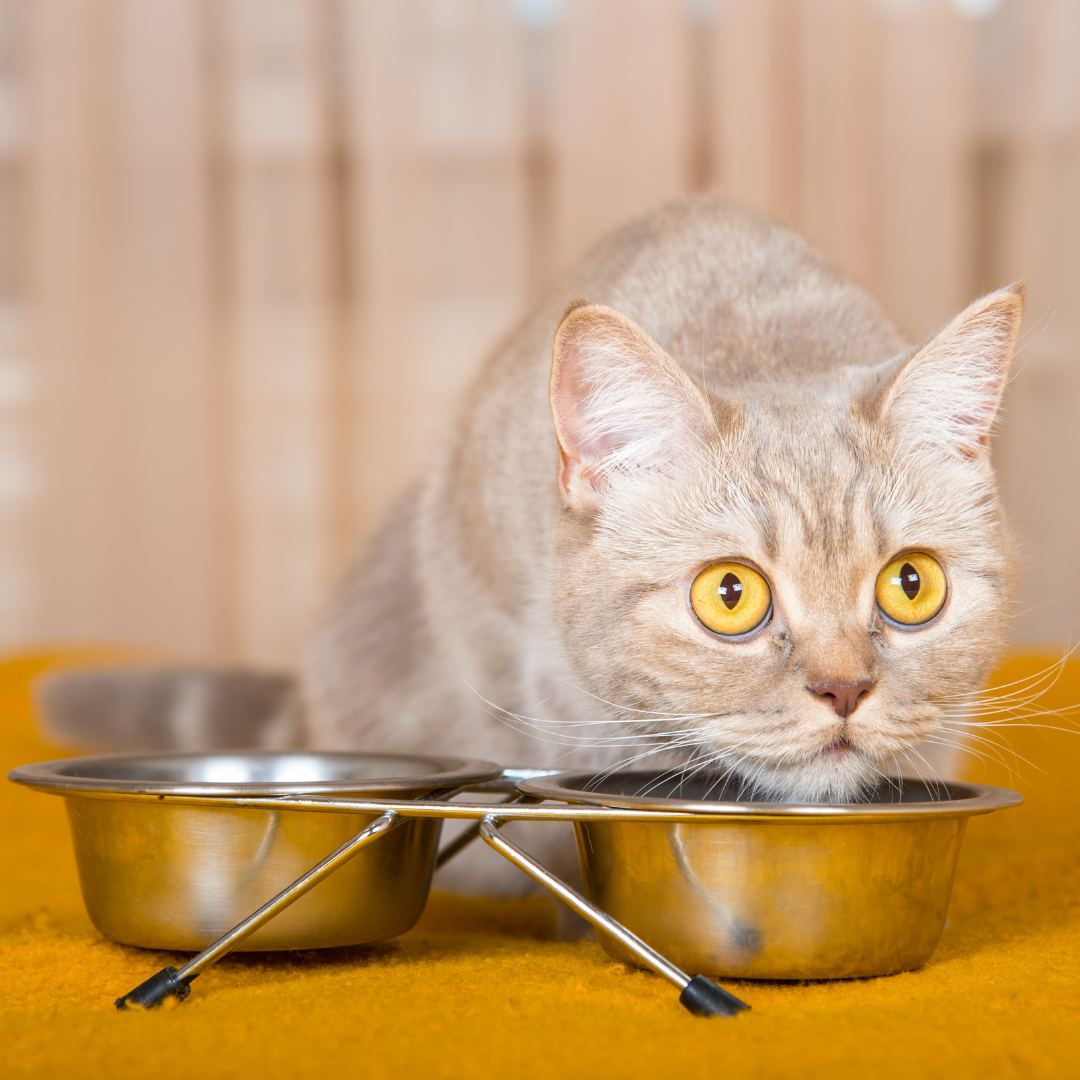
Conclusion
Providing your cat with a balanced and nutritious diet is essential for health and well-being. When choosing cat food, it's important to consider your cat's age, health needs, and personal preferences.
Several types of cat food are available, including dry, wet, and semi-moist options, each with advantages and disadvantages. Additionally, age-specific cat foods are designed to meet the unique nutritional needs of kittens, adult cats, and senior cats.
While many cat food brands are on the market, choosing a high-quality brand with nutritious ingredients and a good reputation is important. Some of the top cat food brands include Hill's Science Diet, Royal Canin, Purina Pro Plan, Orijen, and Blue Buffalo.
Lastly, if you prefer to make your cat's food at home, you must research and ensure that your cat receives a balanced and complete diet. With the right knowledge and care, you can provide your cat with the best diet to support its health and happiness.
I trust you enjoyed this article on the Best Foods For Cats. Please stay tuned for more blog posts to come shortly. Take care!
JeannetteZ
>>>Please click here to read my all-inclusive article about the Best Cat Care Tips For Beginners<<<
My #1 Herbal Remedies For Pets Recommendations
Your Opinion Is Important To Me
Thoughts? Ideas? Questions? I would love to hear from you. Please leave your questions, experience, and remarks about this article about the Best Foods For Cats in the comments section below. You can also reach me by email at Jeannette@Close-To-Nature.org.
Disclosure
This post may contain affiliate links. As an Amazon Associate and other affiliate programs, I earn from qualifying purchases at no extra cost to you. Read my full affiliate disclosure.
You might also enjoy these blog posts:
Best Homemade Remedies For Glass Skin
Best Homemade Remedies For Cough
Best Homemade Remedies For Hair Growth

